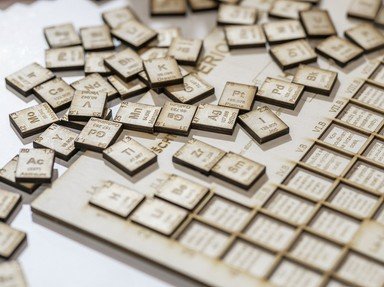Quiz Answer Key and Fun Facts
1. From which of these did the element carbon get its name?
2. What does the number 6 have to do with the element carbon?
3. Which of these is a naturally occurring radioactive isotope of carbon?
4. Which of these sets of elements are found in the same group of the periodic table as carbon?
5. Carbon has several physical forms called allotropes. Which of these substances is NOT an allotrope of carbon?
6. Carbon is generally considered a non-metal. Which important metallic property is demonstrated by graphite?
7. What does the number 4 have to do with how carbon forms compounds?
8. Carborundum is a very hard carbon compound, used as an abrasive. What is its chemical name?
9. Which carbon compound was commonly used in miners' and cyclists' lamps and in the headlights of early motor vehicles?
10. Not all carbon compounds are friendly. The cyanides are a class of carbon compounds that are often highly toxic. Which of these is the correct chemical formula for the cyanide ion?
11. Iron and cyanide are the main components in one of the first synthetic pigments. What is the common name for this dark blue coloured pigment?
12. Before it was discovered to be rather toxic to the liver in particular, carbon tetrachloride was used quite extensively in industry. Which of these was NOT a common use for carbon tetrachloride?
13. I remember this liquid as one of the smelliest in the chemistry laboratory, with a strong odour of rotten eggs, but they tell me that if it's pure it's almost odourless. It is an excellent organic solvent, but is very flammable. What is it?
14. Which of these is the most common and most stable oxide of carbon, forming 0.038% of the Earth's atmosphere?
15. In the mostly inorganic carbon quiz there has to be one question about organic carbon chemistry. Which element does carbon bond with in almost all organic compounds?
Source: Author
Flamis
This quiz was reviewed by FunTrivia editor
crisw before going online.
Any errors found in FunTrivia content are routinely corrected through our feedback system.

